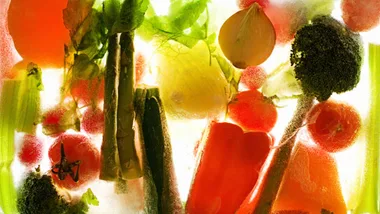Growing your own fruits and vegetables is a great way of connecting with the food you eat, but it is important to practice safe preparation of fruits and vegetables to ensure you get the most out of them.
Once harvested, vegetables should be washed under clean running water to wash off any physical debris or residue from the skin. This is important even for fruits or vegetables which will be peeled, as the process of peeling can result in contaminants coming in contact with the flesh.
Some vegetables or fruits, such as berries, will not keep as well or change texture if washed a long time before using; in the case of berries, wash just prior to use.
For vegetables, mushrooms will soak up water if washed. Instead of washing, wipe mushrooms with a damp paper towel to remove any dirt just prior to use.
Most vegetables are perfectly safe to eat raw. Some raw carrot or capsicum can be a great way to add some crunch to salads. The exception to this rule is legumes, which include chickpeas, lentils and kidney beans; they’re nutrient powerhouses, but must be cooked before use to inactivate potentially harmful compounds found naturally in them.
Fresh varieties can be boiled or steamed on their own or cooked in recipes such as soups or casseroles, while canned varieties are cooked during processing and can be eaten without any further cooking.
Delicious, fresh, homegrown fruits and vegetables are a great addition to the diet and making sure they are prepared properly helps to maximise their benefits.


